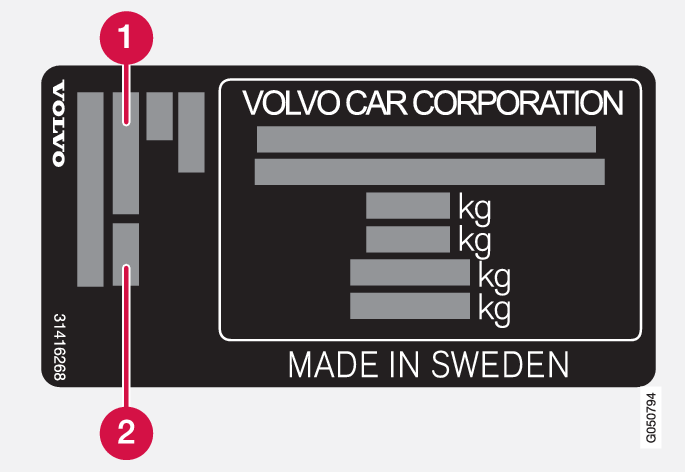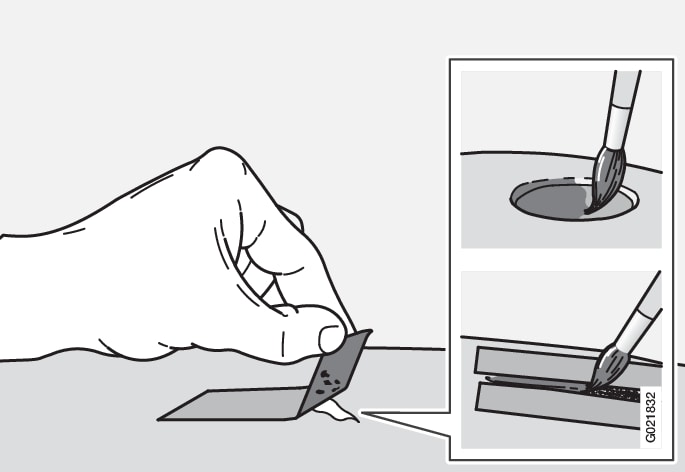Touching up minor paintwork damage
To avoid the onset of rust, damaged paintwork should be rectified immediately.
Materials that may be needed
Colour code
The label for colour code is located on the car's door pillar and is visible when the right-hand rear door is opened.

 Exterior colour code
Exterior colour code Any secondary exterior colour code
Any secondary exterior colour code
It is important that the correct colour is used. For product label location, see Type designations.
Repairing minor paint damage such as stone chips and scratches

Before work is started, the car must be clean and dry as well as at a temperature above 15 °C.
Apply a piece of masking tape over the damaged surface. Then remove the tape to remove any loose paint.
If the damage has reached down to a metal surface (sheet steel), it is preferable to use a primer. In the event of damage to a plastic surface, an adhesive primer should be used for better results - spray into the spray can's cap and brush thinly.